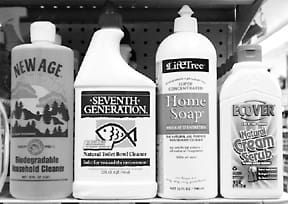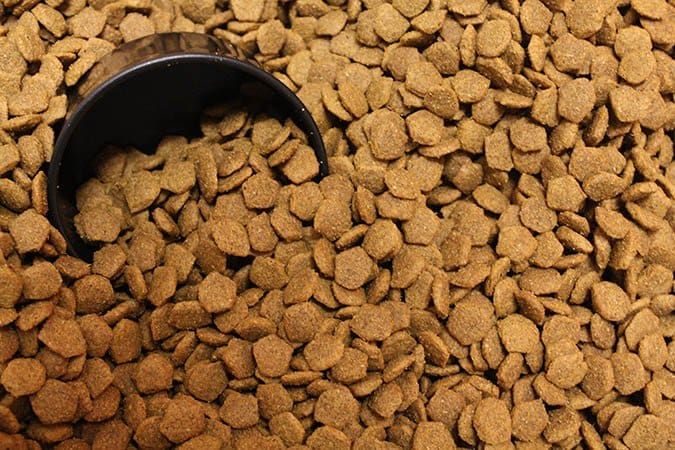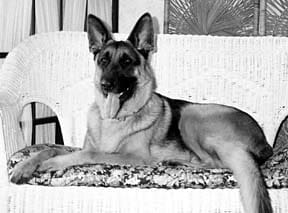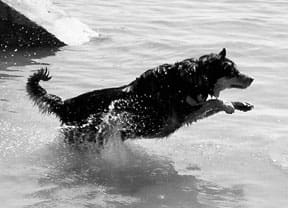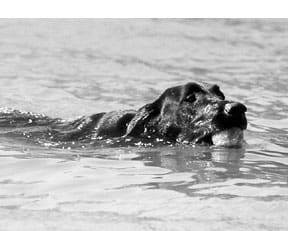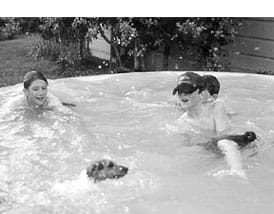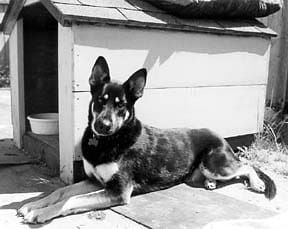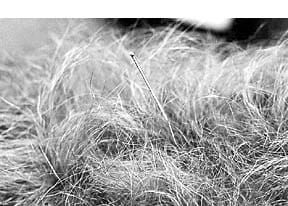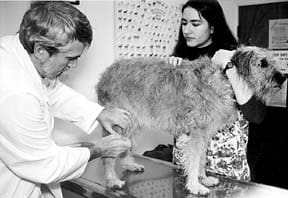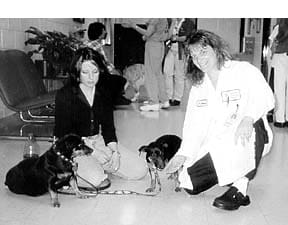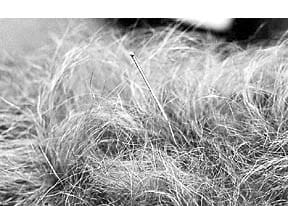Let’s be clear: In most cases, vaccines are miraculous, life-saving agents. The diseases they (usually) prevent in our dogs range from always fatal (such as rabies) to serious and sometimes fatal (such as distemper, parvovirus, leptospirosis) to the rarely fatal (such as bordetella and coronavirus). And even diseases that are not fatal can cause all sorts of grief for both the dog in question and his owner (and the owner’s pocketbook). Dog lovers the world over are eternally grateful for the gifts that modern vaccines have conferred upon our canine companions.
However, as with most medical breakthroughs, a long period of adjustment and modulation often follows the introduction of a powerful new therapy, as treatments are refined and researchers and practitioners learn how to best use their new tools. The strength of the radiation routinely used for x-rays, for example, is far lower today than it was when the diagnostic technique was first incorporated into hospitals. Birth control pills contain far lower levels of hormones today than they did 10, 20, and 30 years ago, without any loss of effectiveness. Due to new (and growing) concerns over antibiotic-resistant bacteria, doctors no longer gleefully prescribe antibiotics for every single infection (or suspected infection) a person may have.
There are parallel truths for veterinary medicine, as well. Initially hailed as miracle cures for flea infestation (and thereby, for its related diseases), organophosphorus and carbamate insecticides have proved to be fairly toxic, especially at the high relatively concentrations used in early flea control products. Most veterinarians prescribe lower doses of corticosteroids than they once did, due to the numerous side effects now known to be caused by these powerful medicines. And so on.

A growing number of veterinarians are concerned about modern vaccine use, and, from a medical history perspective, this concern is right on time. Veterinary vaccines have been around long enough that their use is considered absolutely routine and expected – so much so that few pet owners balk at the administration of annual vaccinations. Unfortunately, it could be that this overwhelming acceptance of the “standard” vaccine protocols recommended by the veterinary colleges has actually played a part in the increasing frequency of vaccine-associated disease.
A short history
Most dog owners are unaware that the practice of annual administration of most vaccines is, for the most part, based on vaccine manufacturers’ recommendations. Few studies have been conducted to determine how long vaccines are usually effective; after all, why should a company that makes its money by selling vaccines try to determine how many years a dog owner can safely NOT vaccinate?
Veterinarians, who are supposed to have our dogs’ best interests at heart, also have to make a living, and selling vaccination services traditionally represent a healthy share of a vet’s income. To be fair, the “annual vaccination visit” also provides vets with an indisputably valuable tool: The perceived need for yearly shots has provided the strongest tool for compelling dog owners to come to the clinic and allow veterinarians to examine their clients each year – one of the best ways to ensure prompt diagnosis and treatment of disease. And, for many years, most veterinarians found vaccinations to be relatively safe.
But as vaccine use has become more prevalent, so have vaccine-related problems, both acute and chronic. As is often the case, the so-called “alternative” or “holistic” veterinarians were among the first to sound the alarm, and implicate vaccinations in the etiology of disease. The veterinary establishment paid little attention to these claims until respected researchers began to confirm some of those suspicions.
In 1983, W. Jean Dodds, DVM, a veterinarian with a referral practice in hematology and immunology in Santa Monica, California, suggested that autoimmune disease was occurring in certain susceptible animals as the result of over-vaccination. Dr. Dodds’ subsequent research has suggested that the onset of immune-related problems in dogs often coincides with the administration of vaccines.
Defining over-vaccination
Few – if any – veterinarians advocate never vaccinating dogs. For individual dogs and the canine population at large, the benefits of vaccination clearly outweigh its dangers. But the goal is a healthy middle ground: enough vaccinations to confer adequate protection from disease, and not so much immune-system manipulation as to cause health problems. As such, defining and quantifying over-vaccination is the task for veterinary researchers and dog owners alike.
The practice of annual vaccination against all diseases is the first casualty in the war against over-vaccination. A 1992 article in Kirk’s Current Veterinary Therapy by Tom R. Phillips, DVM, and Ronald D. Schultz, Ph.D., professor and chair of the Department of Pathobiological Sciences at the University of Wisconsin School of Veterinary Medicine, called the practice of annual vaccine boosters one of “questionable efficacy,” and suggested that there is no immunologic requirement for annual revaccination. The veterinary establishment is slowly beginning to agree.
For example, Colorado State University’s Veterinary Teaching Hospital recently published new vaccine protocols for dogs and cats. Specifically, the hospital no longer recommends yearly boosters for dogs, but suggests the standard series of three rounds of vaccines for puppies (parvovirus, adenovirus 2, parainfluenza and distemper, with rabies after 16 weeks of age), booster shots one year later, and then every three years thereafter.
The Colorado State Veterinary Medicine Biomedical Sciences website comments, “Our adoption of this routine vaccination program is based on the lack of scientific evidence to support the current practice of annual vaccination, and increasing documentation showing that over-vaccinating has been associated with harmful side effects. Of particular note in this regard has been the association of autoimmune hemolytic anemia with vaccination in dogs and vaccine-associated sarcomas in cats – both of which are often fatal.”
Vulnerable dogs
One of the most important avenues of research in vaccine technology concerns those dogs that are especially prone to vaccine-related problems. Obliviously, problems are more likely to crop up when dogs with immune system vulnerabilities are vaccinated. Dogs should not be vaccinated if they are sick (especially if they are feverish, since fever inhibits the body’s response to vaccines) or elderly (a condition that is relative from breed to breed, but includes animals whose immune systems are losing strength).
Similarly, dogs should not be vaccinated if they suffer from immune system problems – diseases due to overactive immune systems (such as allergies), autoimmune disorders (where the body’s protectors are attacking the body’s own cells), or immune-deficient disorders where the protective responses are either underactive or failed. (For a complete discussion of these classes of disorders, see “When They Are Not Immune,” WDJ January 2000.)
In addition, certain breeds of dogs – or, in some cases, certain families of dogs – seem to be at increased risk for adverse reactions to vaccines. According to Dr. Dodds, Akitas and Weimaraners are prone to specific problems with vaccines, as are dogs with certain coat color dilutions, including double-dilute Shetland Sheepdogs, harlequin Great Danes, and albinos.
Sensitive individuals can crop up in any breed or color, however. Owners should consult a knowledgeable veterinarian (or veterinary immunology specialist) before revaccinating any dog who has had a reaction to a vaccine.
Balancing act
So how do you vaccinate your dogs enough, but not too much?
The best tool currently available for achieving this end is called a vaccine titer test. A vaccine titer test (also known as an antibody titer test) measures the levels of a specific antibody in a dog’s blood. Antibodies are protective substances produced by an animal in response to stimulation by an antigen – in this case, a disease antigen that is engineered by humans to produce this protective antibody response: a vaccine. Antibody titer tests will also detect antibodies produced by the dog’s body if he has successfully withstood exposure to the disease in question.
Please note that the phrase “titer test” is frequently misused; many dog owners assume it refers only to antibody titer tests. But titer tests can also be used to detect disease antigens; these are generally referred to as “disease titers,” and are used to identify diseases when other signs of disease are confusing or undetectable.
To conduct a vaccine titer test, your veterinarian draws some of your dog’s blood and sends it to a veterinary school diagnostic laboratory or to a commercial lab. Costs vary widely, depending on the lab that tests the blood and the veterinarian who draws the blood and helps interpret the results.
Lab fees range from $15 to $40 per titer test, with a separate test conducted for each vaccine. Some veterinarians (especially if they are hostile to the idea of vaccine reduction or concern) charge a prohibitive price for drawing blood and arranging the tests. Others (especially if they are interested in reducing the use of vaccines) will charge nothing, or just a nominal fee for the blood handling, as part of their standard health examinations. Depending upon the lab and the specific test required, the results may be returned in as little as one day or as much as two weeks.
When the results are in…
Here’s where things get complicated. There are a number of methods that labs use to test antibody titers, but the basic process involves repeatedly testing greater and greater dilutions of the blood to determine the highest dilution that still causes a positive reaction. The results of a vaccine titer test are expressed in a ratio (for example, 1:5); 1 is always the first number. In this example, it means that the blood can be diluted to – at most – one part of blood to five parts saline and still cause a positive reaction. The higher the second number is (indicating a more highly diluted and positively reacting sample), the more antibody is present in the dog’s blood. Interestingly, antibody titers tend to be higher in dogs that have withstood exposure to a disease than in unexposed but vaccinated dogs. In other words, a dog who survived distemper will usually have a higher distemper antibody titer than a dog who never had the disease but was vaccinated against it.
Different labs, different methodologies
Our first complication? Because there are several techniques by which measure antibody titers, the values are different at every lab and can have different meanings. That makes it much more difficult to interpret the results, since you cannot compare values from one lab to another, says Edward Dubovi, MS, Ph.D., director of virology at the Cornell College of Veterinary Medicine Diagnostic Laboratory.
For example, Cornell’s 1:128 may be another lab’s 1:16. Of course, the labs send along interpretative data along with this score, indicating exactly where on the scale your dog’s vaccine titer falls, based on the standards and methods the laboratory has established. Most labs include a high and low range of values that they have seen result in protection from that disease.
No guarantee of “protection”
But for our next, and more complex complication, dig this: there is no ideal value that is guaranteed to confer protection from disease. According to Dr. Wynn, antibody levels may suggest, but not conclusively prove, how much immunity that a pet carries against a specific disease. For many diseases, antibodies are the prime source of protection against disease, and a high level suggests that an animal may adequately respond when exposed and be protected against the agent causing disease.
Conversely, low levels indicate that the pet may be vulnerable to contracting the disease in question. But antibodies (also known as humoral immunity) are only one of the body’s lines of defense against disease; the body is also defended by agents of cellular immunity, also known as T lymphocytes. (For more information about the intricate makeup of the immune system, see “Looking for Immunity,” WDJ December 1999.)
So, a dog with a low antibody titer but a fabulous T-cell army may well be adequately protected from the disease in question, while a dog with a high antibody titer but ineffective cellular immunity may be vulnerable.
In addition, it can’t be stated often enough that every animal is an individual, and each individual’s immune response to the same amount and schedule of vaccines will be different. A perfect illustration of this was provided to use recently, when a reader called the WDJ editorial office to discuss her dogs’ antibody titer results.
The reader explained that she owns two dogs, brothers from the same litter. She has had the dogs vaccinated at precisely the same time and with the same vaccines throughout their lives. One of the dogs has suffered numerous though minor health problems, and exhibited a reaction to his last vaccine a year ago, so the owner decided to have both dogs’ antibody titers tested before revaccinating them this year.
Interestingly, the sickly dog who had suffered a vaccine reaction last year had a quite high titer; the “healthy” dog exhibited a very low titer. Now what do I do? the owner wondered. Good question.
Researchers have yet to agree on what values can safely be considered “protective,” though some conservative lines in the sand have been drawn. “We’re in a very inexact science,” says Dr. Dubovi. ”We’re trying to provide something that people are comfortable with as a concept and not put any animals at risk.”
However, “Current thinking in immunology says that any positive titer means they have memory,” says Dr. Wynn. Dr. Dubovi concurs. “The feeling out there among people who do this type of stuff is that any positive value that you can come up with probably will prevent the development of significant clinical disease.”
Informed decisions
Though your knowledgeable and sympathetic veterinarian can help inform their dog-owner clients, the decision to revaccinate against specific diseases rests in the owners’ hands; they have to decide for themselves whether or not their dog’ titers indicate “adequate protection.”
This can be an easy decision when the previously vaccinated dog is young, vibrantly healthy, and possessed of a nice high antibody titer; this dog’s owner will likely feel quite confident is skipping Skippy’s boosters that year. It might be wise for the owner of a sickly dog with a nice high antibody titer to also skip the boosters, at least until the dog is in better health or has lower titers, in order to prevent vaccine-triggered immune system mayhem. The decision is more difficult when the dog’s health is poor and the titer is low.
“When [titer values] come back not sufficient, you do have to make a decision about whether it’s worth vaccinating,” says Dr. Wynn, who has been using vaccine titer tests in her practice for several years. Most of the time, Dr. Wynn finds positive test results in vaccinated dogs. But one dog, a Doberman, kept showing low parvovirus titers. Dr. Wynn recommended revaccinating the dog, then testing again in a month. The owner agreed. However, upon retesting – and in spite of revaccinating – the Doberman still didn’t show a sufficient immune response. “After you test them that way, actually challenge them with a vaccine, and go back and check that titer, if they’re not making a response to a vaccine there’s no point in continuing to stick them with the same vaccine,” says Dr. Wynn.
Dr. Herman has had similar experiences in her practice. “My gut feeling is – when I’ve picked the brains of immunologists because I’ve been concerned about this – that if the body recognizes the disease even if it’s positive at a 1:10 [a low positive], it’s probably how that animal responds protectively to the disease challenge,” she says.
And, if it’s any comfort, consider that vaccination is, in itself, never guaranteed to protect a dog from disease. There are numerous reasons why vaccines fail to stimulate a vigorous antibody response in any given dog, and NO vaccines protect 100 percent of all dogs.
To the future
To be sure, vaccine titer testing has made a name for itself in the ongoing vaccine debate, and the tool is already being utilized by owners to make informed decisions about re-vaccination. But the full potential of this testing is yet to come. Definitive protective values are still fuzzy, its use in clinical practice isn’t widespread, and more studies are needed.
One step forward is the large-scale study (discussed in the July 2000 issue of WDJ) conducted by Lisa Twark, DVM, and Dr. W. Jean Dodds, of the serum antibody titers for parvovirus and distemper. The study is ongoing, but initial results indicate that annual vaccination for parvovirus and distemper is unnecessary to protect most dogs.
Another step forward is the VAX program at the Cornell Diagnostic Lab that started up in March 1999 in response to increased interest in vaccine titer testing. The program provides vaccine titer testing to interested veterinarians who pay a one-time fee to enroll their practice; individual test fees are separate. Test results are sent to the veterinarian, and recorded by the lab with the hope of accumulating data on individual dogs to determine changes in immunity, if any, over several years.
Hopefully, as more veterinarians become aware of the risks of over-vaccination, they will begin to encourage their clients to order vaccine antibody titer tests. As more data gets added to the studies, we’ll learn more about the ideal administration schedule for all the vaccines currently available. And who knows? What we learn about safe vaccination schedules for animals may well contribute to increasing the safety and effectiveness of human vaccination programs.
Virginia Parker Guidry is a frequent contributor to WDJ. A freelance writer, she lives in San Diego.


